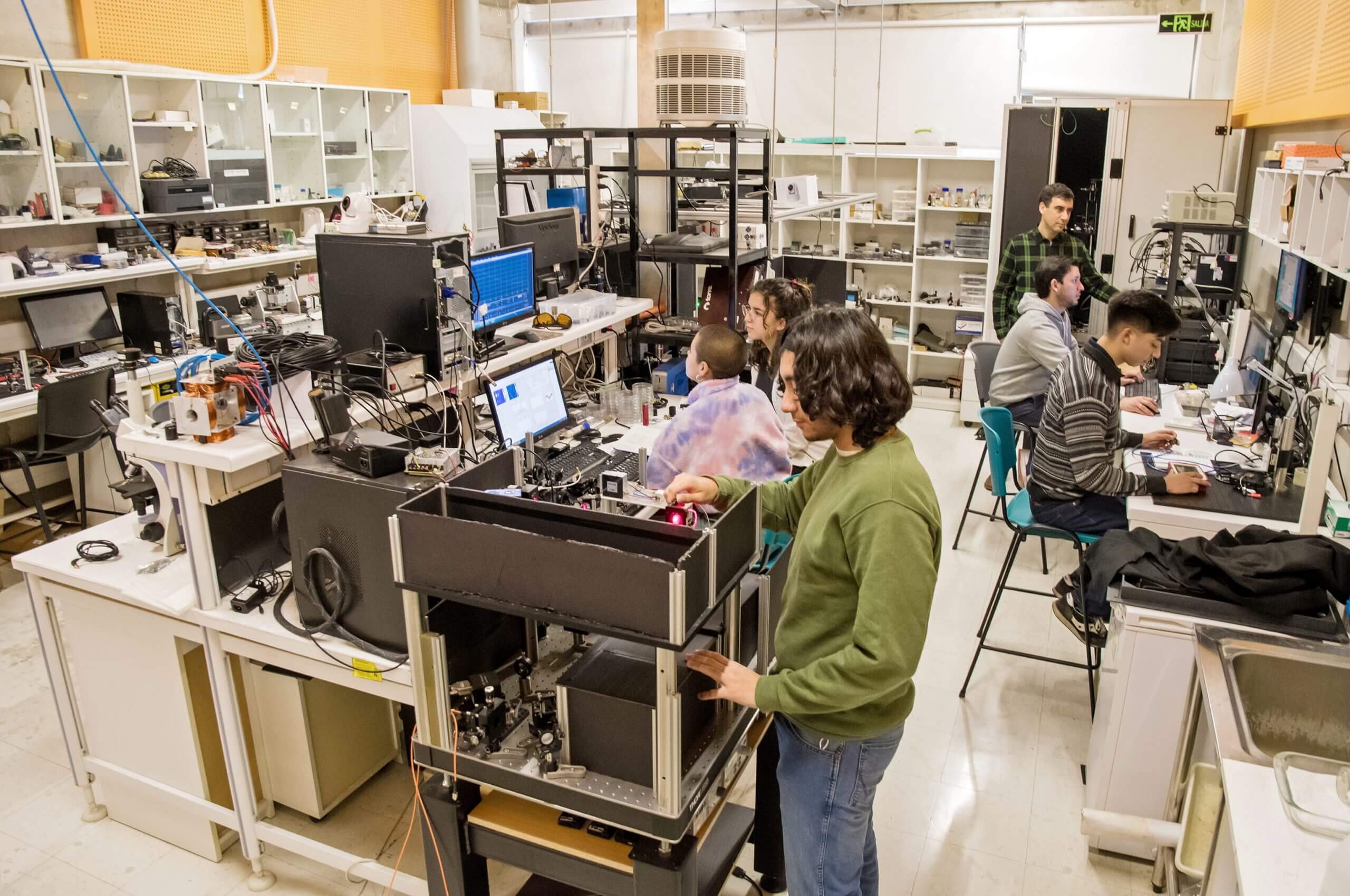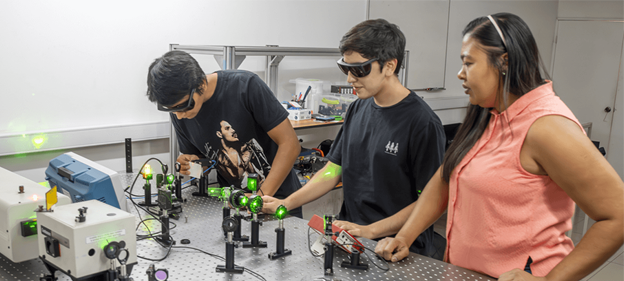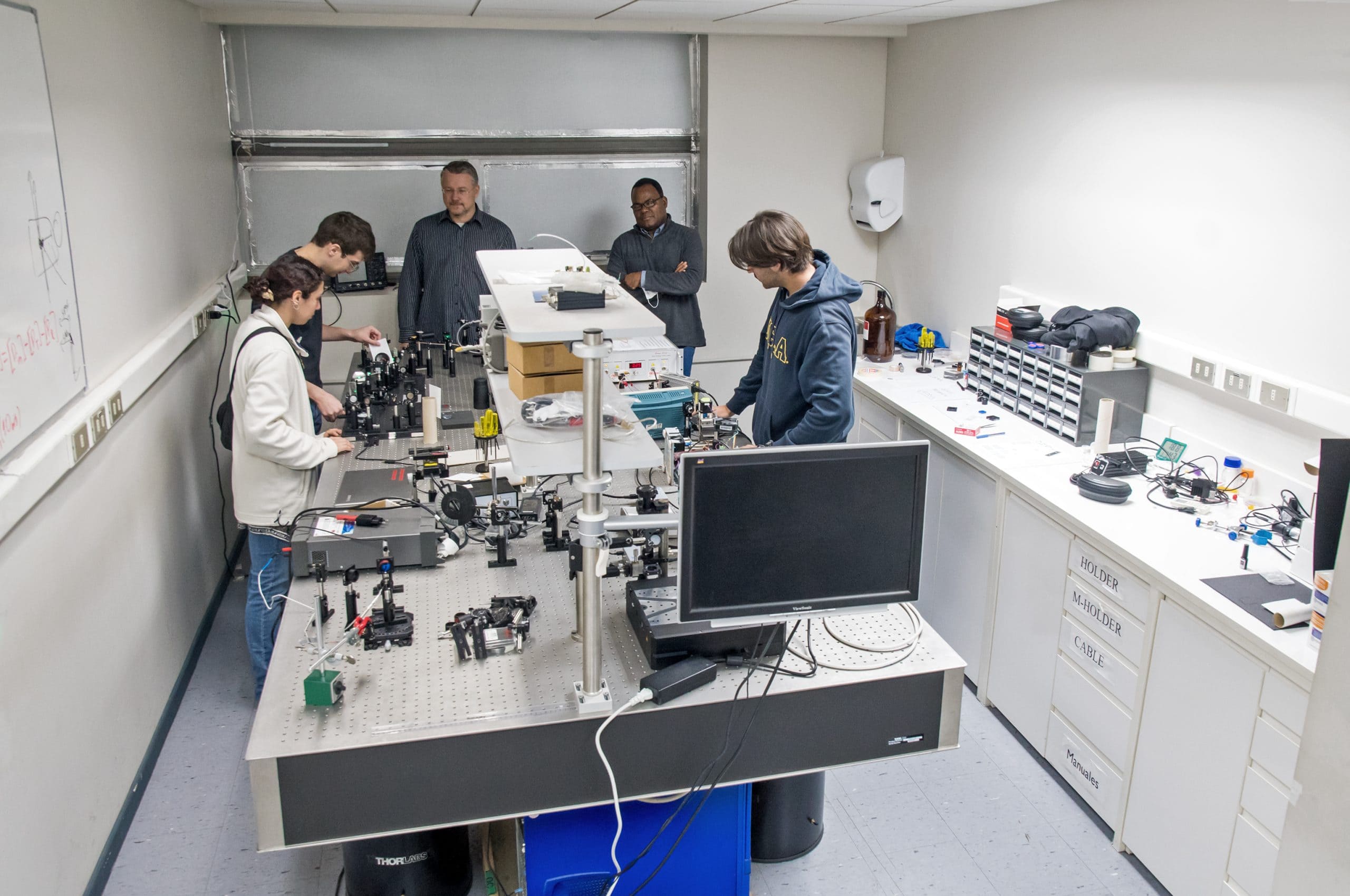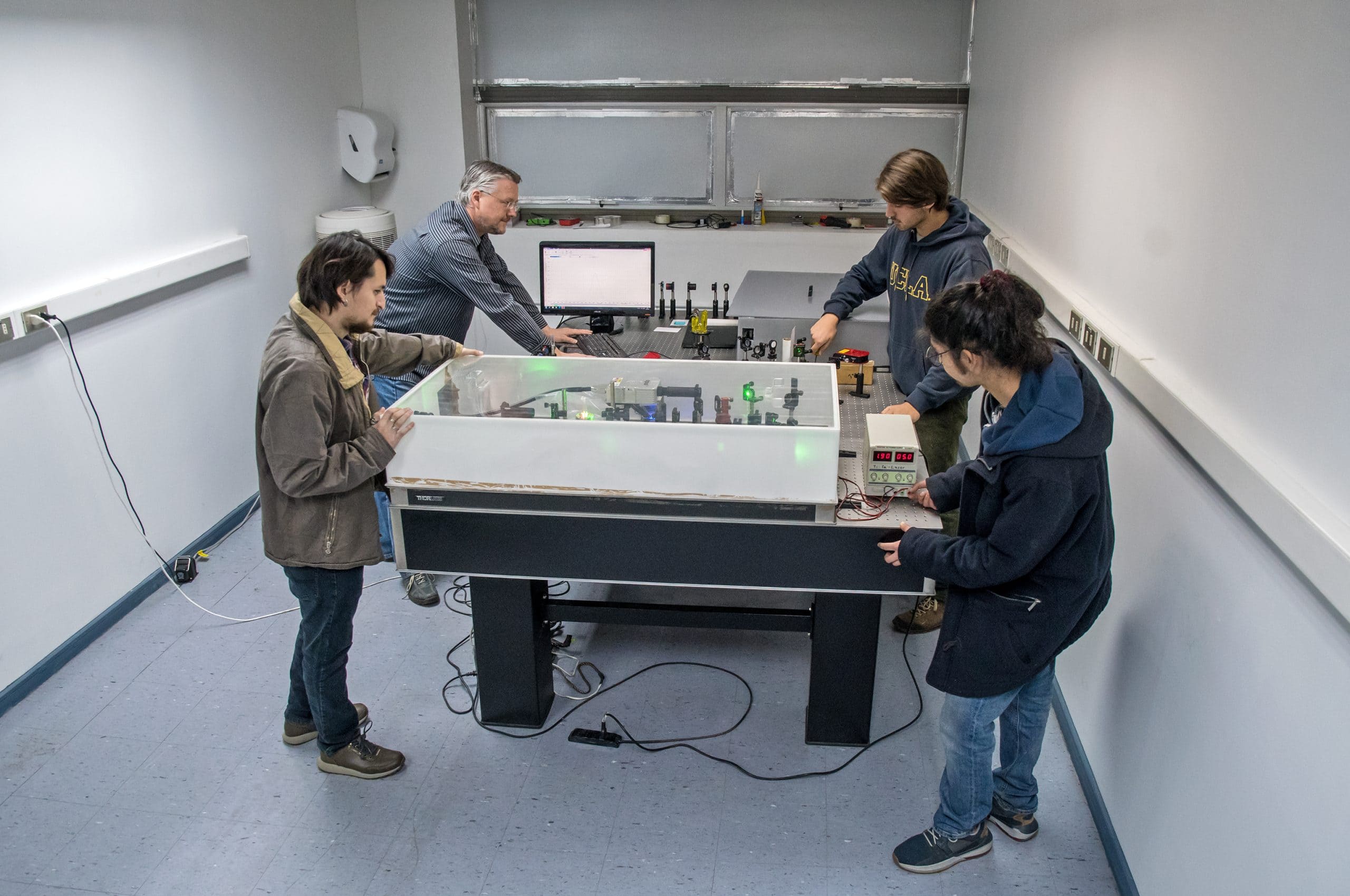Quantum optics is the study of the interaction of electromagnetic radiation with matter. Currently, there are several experiments focused both on high-precision applications and on the testing of hypotheses that aim to answer fundamental questions of quantum mechanics, such as its counter-intuitive and non-local character.
ON THIS PAGE
Description
The Quantum Optics Group at the UC Institute of Physics consists of laboratories where nonlinear optics phenomena and nanoscopic systems with multiple quantum degrees of freedom are studied.
In the Nonlinear Optics Laboratory, using a very intense beam of light provided by a titanium-sapphire laser, ultra-short, high-power infrared pulses are studied. These pulses have a maximum intensity of ten thousand trillion watts per square centimeter. In addition, a homodyne detector with photodiodes of very high quantum efficiency and fast amplifiers is used to investigate the photon statistics of an external cavity laser diode.
The Nanoscopic Systems Laboratory studies how to control both electronic and nuclear spins in solid-state color centers. Such degrees of freedom can be used as quantum bits in computational processes and as sensors for high-precision measurements.
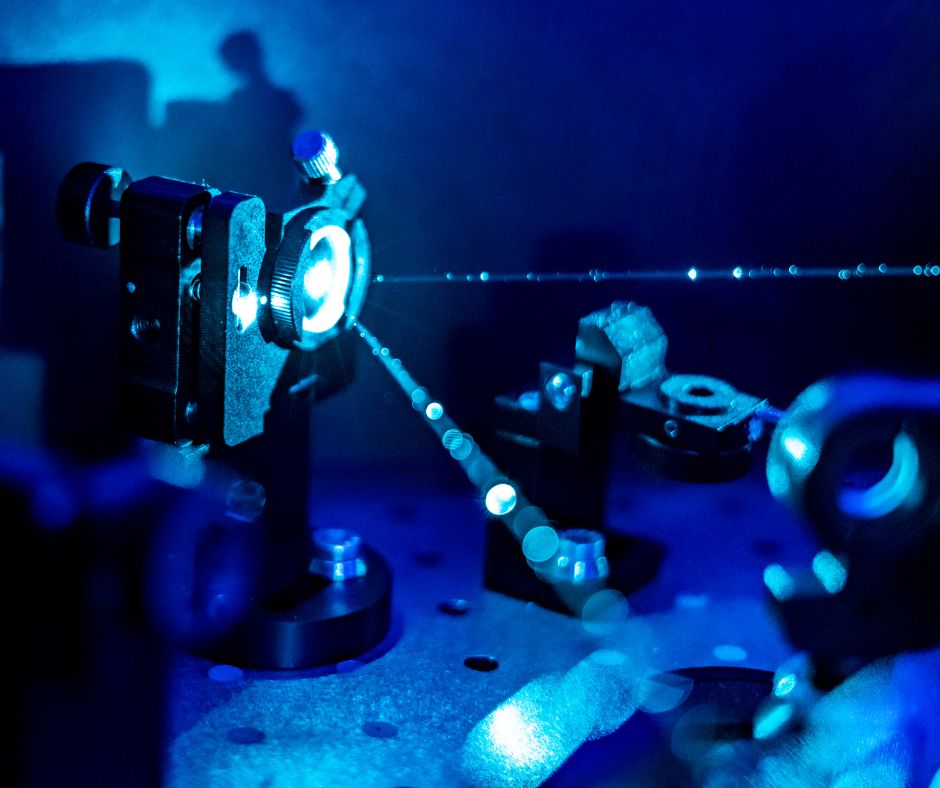
Questions this area strives to answer
Quantum Information
Quantum Information is a new science that emerged from Quantum Mechanics and aims to improve the transmission and processing of information, which promises a number of new technologies for the future. A fundamental and necessary aspect is quantum entanglement. This term was introduced in 1935 by Erwin Schrödinger to describe a quantum phenomenon in which entangled particles cannot be described as individual particles with defined states, but rather as a joint system. Entanglement is the basis for technologies under development, such as quantum computation and cryptography, and teleportation experiments. Open theoretical problems include the propagation and distribution of entanglement in different physical systems.

Control of quantum degrees of freedom
Quantum optics and the control of quantum degrees of freedom in nanoscopic systems are opening the way to explore our world at very small scales and the implementation of interesting applications such as optical signal processing, computing, information, teleportation and quantum cryptography, cooling and trapping of atoms/molecules by lasers, growth of nanostructured materials with exotic optical properties, quantum metrology for high spatial resolution sensors, and single photon sources.
Research Area
